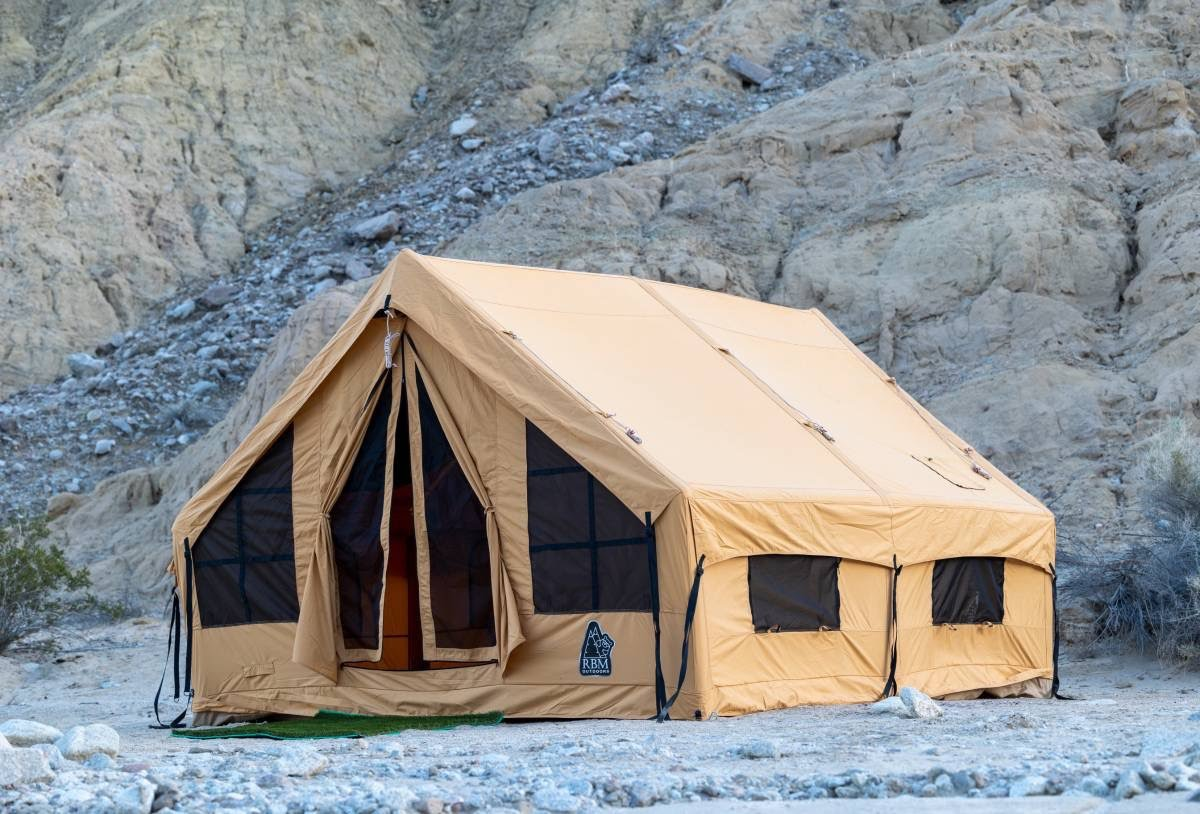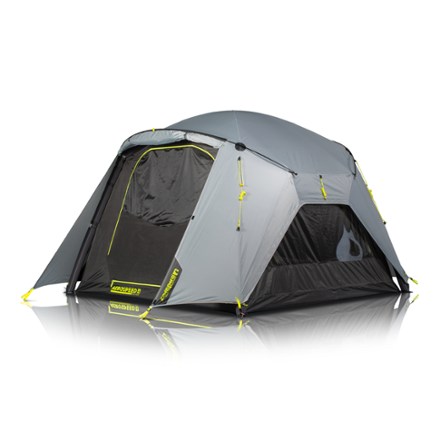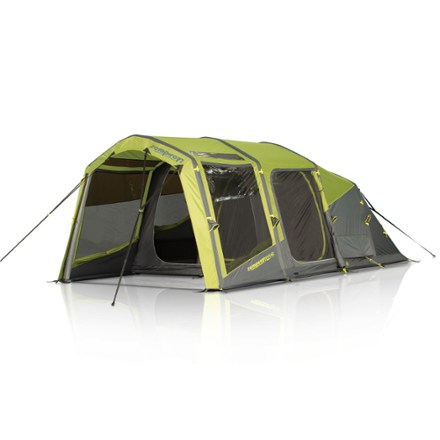Tentes gonflables : l'avenir du confort et de la commodité en camping
Air tent have rapidly gained popularity among outdoor enthusiasts due to their innovative design, ease of use, and exceptional durability. Unlike traditional pole tents, air tents utilize inflatable beams instead of metal poles, making setup quicker, more convenient, and often more stable. This cutting-edge approach to camping offers numerous benefits, making air tents an attractive choice for both beginners and experienced campers alike.
What is an Air Tent?
An air tent is a type of camping tent that uses air-filled beams or tubes to provide structure and support. Instead of relying on rigid poles, these tents feature inflatable tubes that can be inflated using a pump, creating a sturdy, self-supporting structure. Air tents come in a variety of sizes and designs, including family tents, 4-season models, and even specialized tents for specific outdoor activities like festivals or backpacking.

Key Advantages of Air Tents
Imagine this scenario: While other campers are struggling to assemble their tent frames, all you need to do is inflate the air columns, and within minutes, you'll be lying comfortably in a spacious tent, gazing at the stars. This is the most appealing feature of inflatable tents—what would have taken half an hour with traditional tents can now be done as easily as inflating a balloon. Especially when it’s suddenly raining or getting dark, this quick setup method could be a lifesaver.
You might be concerned that this convenience sacrifices stability. In fact, the inflatable beams are even "smarter" than metal poles. They distribute pressure evenly, like the tentacles of an octopus, and adjust flexibly in response to strong winds, instead of resisting them head-on. Last year, when I was camping by the seaside and a gust of wind hit, the metal poles of the nearby traditional tents bent, while my inflatable tent just swayed slightly, with no tear or mark left on its durable, tear-resistant fabric.
Even better, this tent, despite looking large, is surprisingly lightweight. The biggest hassle used to be packing up the heavy metal poles, but now the entire tent rolls up like an oversized sleeping bag, light enough for even someone with little strength to carry. But don't be fooled by its lightweight design—the interior space is enough for a family of four, and the high ceiling design allows you to stand up and change clothes. The large side windows frame the entire starry sky, turning it into a private cinema.
When it comes to maintenance, I used to worry about checking for bent poles after every trip, but now all I need to do is wipe down the rain-resistant coating. Once, a friend accidentally damaged the air valve, and we simply replaced it with a new part in the campsite shop in about ten minutes. If it were a traditional tent with metal poles, the whole trip would have been ruined. After two years of use, the tent is still in almost the same condition as when I first bought it—of course, as long as you don’t treat it like a kite in the wind.
What truly wins me over is the thoughtful attention to detail: no metal poles taking up space, so every corner of the tent is fully utilized; the double-layer vestibule design not only allows for gear storage but can also double as a temporary kitchen; and when it rains, you can watch the water slide off the curved surface while you sit dry inside, brewing coffee and listening to the rain. This is the kind of relaxing camping experience I’ve always dreamed of.
How to Set Up an Air Tent
Setting up an air tent is straightforward and can usually be done in just a few simple steps:
Lay Out the Tent:
Unfold the tent on a flat, level surface. Make sure the air beams are aligned and ready for inflation.
Inflate the Beams:
Using a pump (either manual or electric), inflate the air beams to the recommended pressure. Most air tents feature a valve system that makes inflation quick and easy.
Secure the Tent:
Once the tent is inflated, stake it down and secure the guy ropes to ensure stability in windy conditions. Check for any slack in the tent’s fabric and make sure it’s taut for maximum protection.
Add Optional Features:
Some air tents come with additional features like internal rooms, awnings, or vestibules, which can be added after the basic structure is set up.

Features to Consider When Buying an Air Tent
When shopping for an air tent, consider the following factors to ensure you get the best fit for your camping needs:
Size and Capacity:
Air tents come in various sizes, from small two-person tents to large family models. Choose one based on your group size and the amount of gear you plan to bring.
Seasonality:
While many air tents are designed for summer or 3-season use, there are also 4-season air tents built to withstand colder temperatures and snow. Choose one that matches the climate in which you plan to camp.
Ventilation:
Look for air tents with multiple vents, windows, and mesh panels to provide airflow and prevent condensation buildup inside the tent.
Material Quality:
High-quality, waterproof, and UV-resistant fabrics are essential for ensuring your tent lasts and provides reliable protection against the elements.
Ease of Storage and Transportation:
Consider how easy it is to pack away your air tent. Many models come with carry bags that make storage and transportation more convenient.
Inflation Time and Pressure:
Check the recommended inflation time and the pressure needed to ensure the tent’s beams are adequately inflated. Some air tents come with electric pumps to make the process even faster.
Applications of Air Tents
Air tents are incredibly versatile and can be used for a wide range of camping activities:
Family Camping:
The spacious interior and easy setup make air tents ideal for family camping trips, where comfort and convenience are priorities.
Festival Camping:
Many air tents are designed for festival-goers who need a reliable, easy-to-set-up shelter for short-term stays.
Hiking and Backpacking:
Lightweight and compact models are perfect for backpackers who need a portable shelter that doesn’t take up too much space in their packs.
Glamping:
For those looking for a more luxurious camping experience, larger air tents with high ceilings, multiple rooms, and added features can be a great option.

Current Trends in Air Tents
Air tents continue to evolve with new trends and innovations:
Improved Technology:
Modern air tents now feature advanced valve systems and pressure gauges to make inflation even easier and more efficient.
Eco-Friendly Materials:
Manufacturers are increasingly using sustainable, environmentally friendly materials to create eco-conscious air tents.
Integrated Solar Panels:
Some high-end air tents now come with solar panel options to power lights and small devices while camping.
Custom Designs:
Customized air tents with specific features such as additional storage space, removable sections, or specific color schemes are becoming more popular.
Conclusion
Air tents are a game-changer for modern camping, offering convenience, speed, and comfort for outdoor enthusiasts. With their easy setup, spacious interiors, and sturdy construction, they provide a more enjoyable and hassle-free camping experience. Whether you’re a first-time camper or a seasoned adventurer, investing in an air tent can greatly enhance your outdoor trips, making them more comfortable, efficient, and fun. As innovations continue to emerge, air tents are sure to remain a top choice for those seeking the future of camping.








